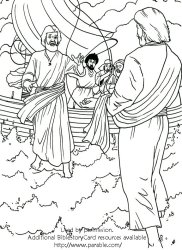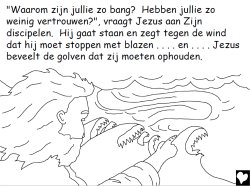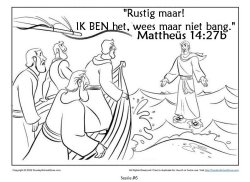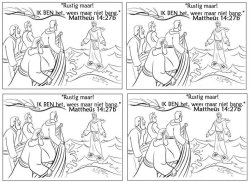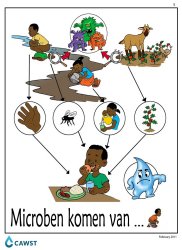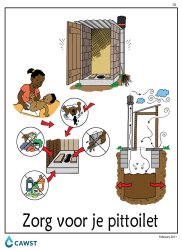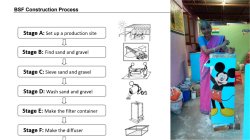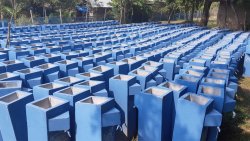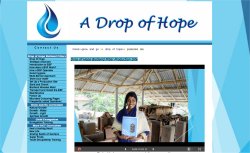
|
 Contact UsEnglish Grow and Go TrainingKinder EvangelisatieGroeien en GaanGroeien en Gaan Water-serie
Drop of Hope BioSand Filters
Drop of Hope School ProjectCountries SelectedHumanitarian ArmUCT Leerplan |
thuis>>groeien en gaan>>water serie >>sessie 5 >>sessie 6
Groeien en Gaan - Water Serie Sessie #6 This week’s destination: Jesus lived a POWERFUL life - He walked on water! MATERIALS: Print Bible Verse Visual Aid. Crayons, Large shallow pans with water for Welcome Game. Two buckets filled with water, two empty buckets, two small plastic cups for the team relay game. Objects that float eg: wooden block, two pieces of heavy duty foil, Objects that sink eg a metal spoon, AS KIDS ARRIVE PRIOR TO THE LESSON:
1. WELCOME GAME: (10 minutes) - WATER WALKING: Let children take off their shoes and socks and take turns placing their feet in a shallow pan of water and then the first child will walk on the floor or on the sidewalk and make watery foot prints. Then the next child will put their feet in the water and try to walk on the exact same footprints as the first child. Each child will follow after and see if they can walk on the same prints. If they happen to make a new print, then the children following can choose which foot prints they want to follow. Tell children that today we'll be talking about walking on the water! 2. TEAM GAMES: (10 minutes) - WATER RELAY: Divide the children into two equel teams. The teams will take turns running to the far side of the room with an empty cup collecting a cup of water and running to the far side of the room to empty it into the empty bucket, handing the cup to the next runner who repeats the exercise until the bucket is full of water. and putting on a swim ring and run back to their team continue to play until all the players have run. |
|
3. ACTIVE PRAISE CHORUS: 4. INTIMATE WORSHIP: (5 minutes) 5. TEACHING: a. Review:
b. Sword Play
c. Teach the Lesson: Jesus walks on the water, Peter Sinks on the Water DOWNLOAD Dutch VideosOn the sea of life, there are floaters and sinkers -- which are you? As you can see, I have a bucket of water and several other things with me this morning. Some of the items that I have with me will float in water and some of them will sink. I am going to show you an item and ask you to vote as to whether you think it will float or sink. Then we will put it in the water to see if you were right or not. Are you ready? Here is a wooden building block. How many of you think it will float in the water? How many think it will sink? Let's try it and see. Great! Most of you were right. The block is floating in the water. Here is the second item. A metal spoon. How many of you think it will float? How many think it will sink? Well, let's try it and see. You were right again! It sank! Here is the another item. A piece of heavy duty foil. How many of you think it will float? How many think it will sink? Okay, let's see. You were right again! It floats! Here is another piece of foil. It is exactly the same as the other one. (Wad it up into a ball.) Now how many of you think it will still float? How many think it will sink? Right again! It still floats. Are you a floater or a sinker? Don't worry, I'm not going to throw you into a tub of water to find out, but I think we can find the answer in the Bible. Read Matthew 14:28-31 After he had finished feeding the five thousand, Jesus told his disciples to get into their boat and go to the other side of the lake while he went up into the mountains to be alone and to pray. While the disciples were going to the other side of the lake in their boat, the wind came up and the water began to get rough. The disciples became afraid that their boat would sink and they would be drowned. Then they looked, and they saw Jesus coming toward them and he was walking on the water. When Peter saw Jesus, he became excited and he said to him, "Lord, if that's really you, let me walk to you on the water". Jesus answered Peter and said, "Come." Well Peter climbed over the side of the boat and started walking on the water to Jesus. Then he began to look around, he felt the strong winds and saw the waves and he became afraid and started to sink. He cried out to Jesus, "Help, save me!" Jesus reached out his hand and saved Peter and he said to him, "Oh, you of little faith, why did you doubt?" Peter Sinks on the Water Children's Sermon | Sermons4Ki... (sermons4kids.com) 6. APPLICATION / ENCOUNTERING GOD: As long as Peter kept his eyes on Jesus, he was walking on the water, but when he took his eyes off of Jesus, he began to sink. As we go through life, there will be some storms. We will encounter some pretty rough water. As long as we keep our eyes upon Jesus and put our trust in him, we will be okay. But when we take our eyes off of Jesus and put our confidence in our own ability, we will surely sink! Encourage the children to come to the alter. You can establish your own alter by placing a chair in the corner, cover it with a gold cloth, have the Jesus crown on the chair and surround it with the red cloth, creating the illusion of the blood of Jesus. CLOSING PRAYER: Dear Jesus, when the storms of life come against us, help us to keep our eyes on you and to put our trust in you. We now know that when we take our eyes off of Jesus and put our confidence in our own ability, we will surely sink! Keep us focused on You Lord Jesus, you who stilled the storm and walked on water. You are the miricle worker, You are our Living water. We put our trust in You. Amen.
NEXT WEEK: In Session #7 of the WATER Series we will be taught about the first miracle that Jesus performed, turning water into wine. The Bible tells us that after they saw Jesus perform this miracle, the disciples believed in him. That was always the reason that Jesus performed a miracle. He didn't do it so that he would become popular or well-liked or show off! He did it so that all would believe that he was God's Son who had come to save them. Remember SIN separated us from God, we had a big problem and God solved that problem by sending His Son Jesus, to live a perfect and POWERFUL life. BioSand Teaching

Key Message: Microbes are transferred from faeces to our mouths in many ways. Possible Questions: • How do you think microbes can be transferred from faeces to your mouth? Content: This poster shows ways in which microbes are transferred from faeces to our mouth and into our stomach. These are the ways that we become sick from microbes. Microbes can spread on our hands and fingers. Every time that our hands touch human or animal faeces, there is a chance that microbes can be spread to our mouth or to our food. The microbes can also be spread to other people's hands and food. Flies are attracted to the smell of human or animal faeces. When they land on faeces and then fly and land on our food, they spread the microbes that cause illness. Also if the flies land on our face or hands, they can spread the microbes to us. Water that is contaminated with faeces will flow around the countryside and spread the contamination. When this water is used in the household, the microbes could be transferred to our mouth. This can happen when we drink the water and also when we use dishes washed in contaminated water. Plants can also pick up microbes from faeces. The fruit or vegetables may become contaminated with microbes from animal or human faeces. If fruit or vegetables are not washed with clean water then we can become sick. When a healthy person consumes contaminated food and water, the microbes enter the stomach and can result in illness. When children and adults are sick, their faeces contain the microbes that caused their illness. When a sick person defecates, especially out in the open field, the microbes are once again entering the environment. In this way, the transmission cycle of microbes and disease continues. Check for Understanding: • How do flies transfer microbes from faeces? • How can microbes be transferred through water? • How are microbes transferred through our hands and fingers? • How can food become contaminated? • How is water contaminated? Information sourced from CAWST.org THINGS YOU CAN DO:
Look After Your Latrine Key Message: Use and maintain your latrine to prevent illness. Possible Questions: • Who cleans your latrine? • How often does the latrine get cleaned? • How do you dispose of children's faeces? Content: The latrine house built on the slab can be made of many materials. If air can flow through, the latrine will smell less. A vent pipe from below the slab to above the roof will let the smells blow out. A fly screen must cover the top of the vent pipe to stop the flies and insects from getting out. Flies will enter the hole, see the light at the top of the vent pipe, fly up the pipe and get caught in the trap. A floor made of concrete is best for the latrine, since it is more secure, lasts long and is easy to clean. Maintain the latrine to stop the spread of illnesses: • Wash the latrine seat and floor • Keep the vent pipe in good working order • Check the fly screen regularly and repair it if needed Do not put the following things inside the latrine hole: • Wastewater (fills the pit quickly) • Chemicals (do not allow the waste material to decompose) • Empty bottles, cans and other rubbish • Bricks and stones Children's faeces should be dumped into the latrine. They also contain microbes, the same as the faeces of adults. Check for Understanding: • Why is it important to keep a clean latrine? • How is a good latrine built? • How can we look after the latrine? • What should not go into the latrine hole? • How should we dispose of children's faeces? Information sourced from CAWST.org Stage A: Set Up a Production Site Embedded Microsoft Office presentation, powered by Office.
Download Handbook #5 Stage A: Set Up a Production Site
CLICK to view Water Series - Session #7
GROW AND GO CURRICULUM
A DROP OF HOPE
|
| Copyright © 2024 www.UnitedCaribbean.com. All rights reserved. Disclaimer Click to Contact us |
